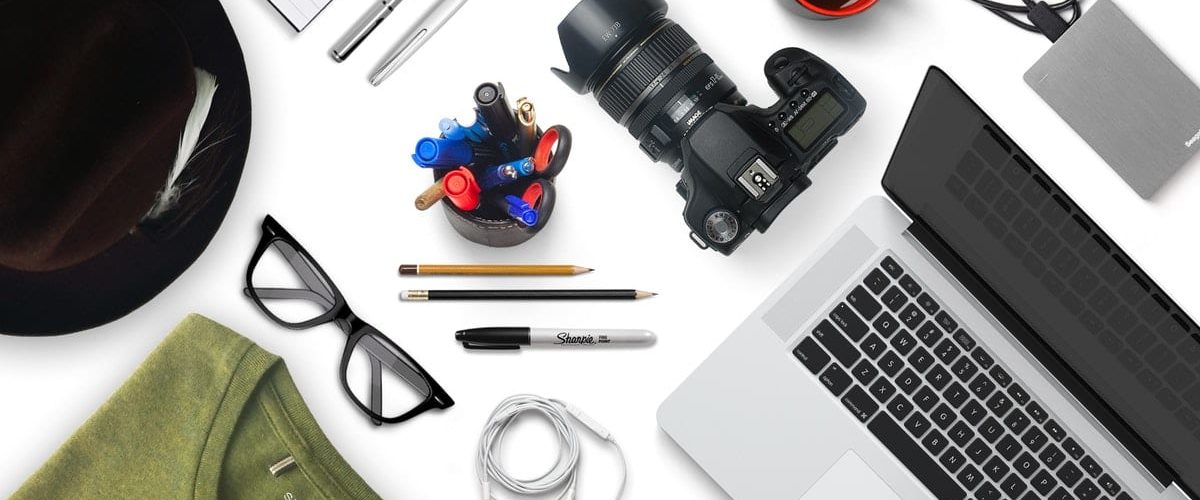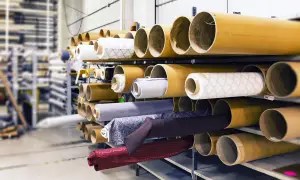
The Internet of Things (IoT) is making its way into more and more enterprise innovation labs and is playing an increasingly large part in people’s daily lives.
Almost every device you interact with these days can be connected to the Internet, providing both consumers and companies with more data than ever before.
This ever-present connectivity has been able to drastically change the way people live, and it is having the same effect on how businesses across industries operate.
Below are 10 industries that are embracing IoT and how they are evolving as a consequence.
Insurance
Data is the insurance industry’s greatest asset, especially now that artificial intelligence technologies are being embraced throughout the industry.
Insurance companies can use data on customers’ habits and activities to make personalized policies that are relevant for each individual’s lifestyle. For example, if the data shows that a person is a safe driver, they could have better coverage at a lower cost.

Sensors in anything from watches to home appliances can provide valuable information to insurance companies about a given customer’s level of risk. The key for insurance companies, then, is fostering partnerships with device companies and IoT solutions to make use of all of that data.
Insurance companies State Farm and Generali have struck partnerships with home-based tech companies Canary and Nest to improve their offerings.
In addition, auto insurance giant Progressive uses onboard diagnostic devices equipped with AI technologies in vehicles to create a more accurate picture of a driver’s ability.
Learn How Artificial Intelligence Will Impact These 10 Industries
Healthcare
For the healthcare industry, IoT means improved quality, lower costs and greater patient-provider access.
A network of connected devices that collect, record and analyze patient data can help with patient diagnosis, and even disease prevention.

Connected IoT devices allow healthcare providers to avoid error-prone manual data collection. Instead, patient physiological information is collected by sensors, analyzed by an AI algorithm and delivered to the main caregiver as actionable information.
IoT can also help cut down on costly hospital stays or clinic visits by allowing physicians to securely monitor a patient’s symptoms remotely and allowing patients to securely communicate with their doctor.
For example, a patient could be diagnosed with a disease that requires them to be monitored for 48 hours while otherwise being healthy and able to go about their regular routine. Before, they would need to stay in a medical facility for the specified time, but now, they could swallow a diagnostic pill, or strap a monitor to their body, and the doctor will see their progress in real time.
Finance
The influence of IoT reaches across practically every aspect of the financial industry from payment processing to customer service, but the area that stands to benefit the most is payment transaction security.

Fraud is one of the industry’s biggest problems, and it negatively impacts banks, consumers, and businesses alike. Getting these crimes under control is an extremely high priority for every financial institution, and IoT offers some fairly powerful fraud prevention capabilities.
Innovations in secure payment transactions have led to new IoT payment options like Apple Pay, Google Pay and various other wearable and smartphone-based payment systems.
Some institutions like Diebold are developing smart ATMs that offer banking transactions with added IoT conveniences like smartphone-scheduled appointments, while also adding increased security with biometric scanners.
Retail
The retail sector has wholeheartedly embraced IoT, and the industry is seeing a broad range of innovations.
Some stores make use of smartphones to act as virtual in-store shopping assistants, allowing retail outlets to tailor consumer experiences and provide more individualized attention to each customer without relying solely on employee interaction.
Another way retailers are removing human error from the equation is through automated inventory solutions like smart shelving that can accurately count the number of items in stock. This allows for better tracking of items, as well as improved customer experience both online and in-store by ensuring that inventories more accurately reflect the store’s actual stock.
Fashion
The fashion industry may seem like an unlikely beneficiary of IoT connectivity, but long manufacturing processes make it a perfect fit.

Rather than designing, measuring and cutting styles that need to be remade and recut for the production line, a designer can employ connected augmented reality tools and 3D imaging to translate their designs into patterns in real time. Then, automated cutting and sewing machines can follow those designs to produce a physical product.
So, even beyond the impact of wearable tech as fashionable accessories, and innovative new connected materials that have the potential to redefine style trends, IoT devices allow designers greater freedom and speed when practicing their craft.
Childcare
One of the hardest parts about raising a child is the unknowns, and data collected and processed by IoT provides information to fill in those gaps.
Devices like TempTraq, a smartphone-connected temperature tracking patch, and Sproutling, a child-sized ankle bracelet that checks measurements like temperature, heartbeat and room noise levels, aim to give parents peace-of-mind about their child’s well-being, and timely alerts when something is wrong.
Furthermore, the latest baby monitors can connect to smartphones, allowing parents to check on their child any time and from anywhere.
Transportation
Have you ever gotten to an event with only minutes to spare only to spend the next half hour searching in vain for available parking? In time, IoT may make this scenario practically extinct.
Many cities have adopted smart parking solutions that can accurately monitor open parking spaces, either in lots or on the street, so they can quickly guide drivers to nearby parking spaces, saving time and lowering pollution from the vehicles.

Public transportation has also been able to take advantage of IoT by using sensors to provide real-time route and vehicle tracking. Riders can know exactly when their bus or train will be arriving at their stop, so they are never surprised by late arrivals or early departures.
On a consumer level, better sensors in a vehicle mean better preventative maintenance. As IoT sensors increase in quality and decrease in price, manufacturers are implementing more capabilities into their vehicles, which makes the mechanic’s job easier and can ultimately increases the life of your car or truck.
Manufacturing
IoT in manufacturing allows for increased efficiency and better communication.
Decades ago, the chain of reporting a problem with a piece of machinery in a factory would drain valuable time. The employee who noticed the problem would have to stop the machine and notify the supervisor of the issue. The supervisor would then contact the person responsible for ultimately fixing the machine, and coordinate their work with the productivity of the factory floor.
With integrated equipment, supervisors have access to real-time data from the factory floor so they are notified of irregularities in processes and can react accordingly.
IoT gives manufacturing companies greater control over their process, and the capability to solve problems more quickly and efficiently.
Advertising
Research has shown that advertising that speaks to your interests is not only more effective, it can actually alter the way you think.
Web advertising platforms like Facebook and Google have long since figured out how to exploit a user’s web surfing habits, but IoT lowers the barrier to entry by increasing the available sources of personal information.
Now, a profile can be built using your computer, smartphone, smart home devices, and fitness sensors, and sometimes together. Advertisers will have the ability to predict what you want before even you realize it.
Connected devices and their various sensors mean that advertisers can more easily build individual consumer profiles of each person. This leads to ads and marketing campaigns that are more personalized, more pointed, and therefore, more effective.
Shipping
Moving packages and inventories from point A to point B may sound simple, but all the moving parts involved make it a complex process.
This complexity makes it an ideal industry for IoT transformation.
Real-time tracking of shipments with various sensors at global checkpoints allows for fewer lost shipments and more accurate readings of vessel capacity.

From vessels to packages to ports, IoT greatly diminishes the possibility of human error in the shipping process by connecting all of the different components.
And this improvement to the supply chain is just the beginning. Increased communication across the entire shipping progression will ultimately lead to greater efficiency and more accurate deliveries.